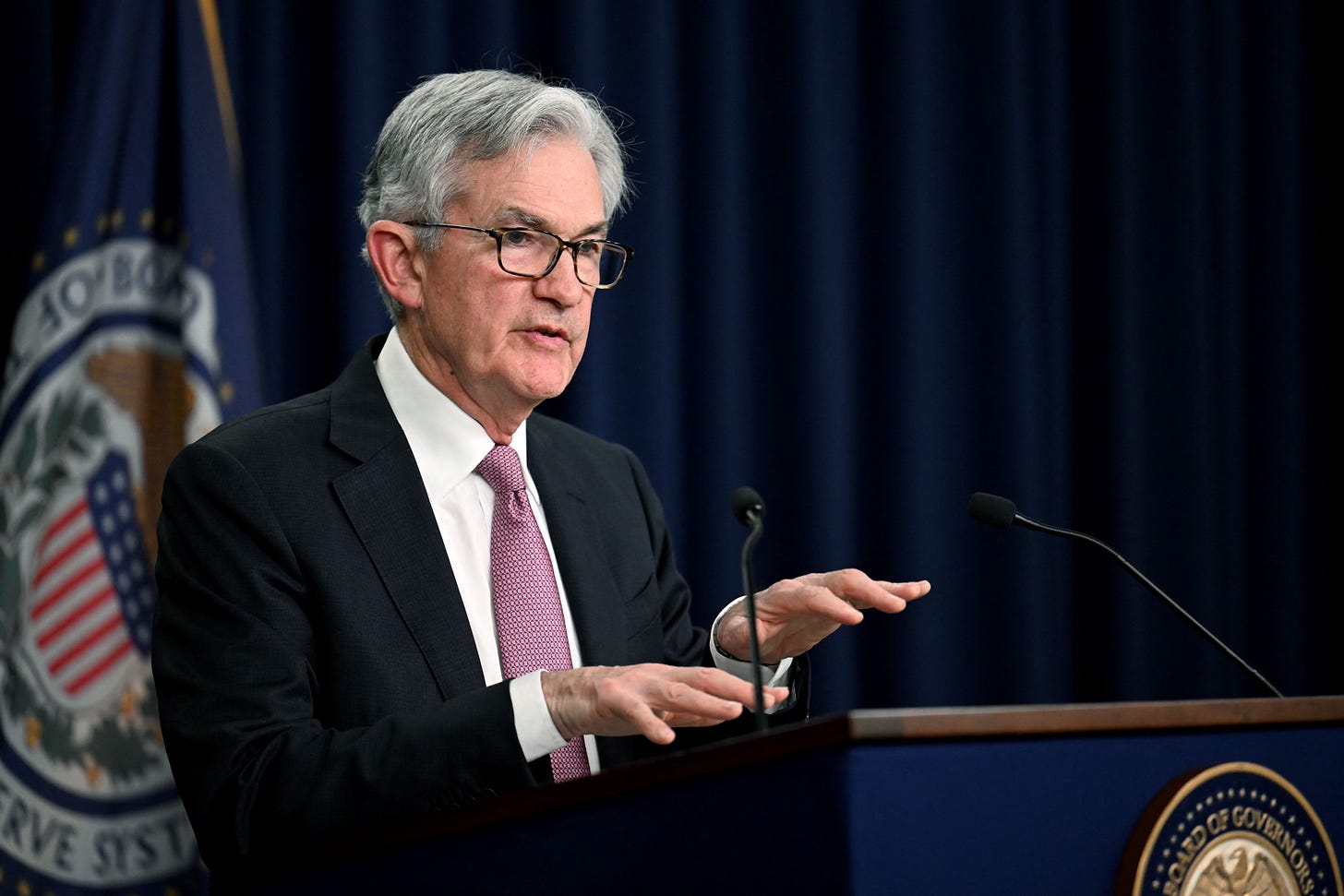As we’ve mentioned, the Very Serious podcast is now hosted directly on Substack, coming to you through the same series of tubes as the newsletter. Yay! We think the migration has been pretty seamless — if you already subscribed to the podcast, it should still be coming into your player of choice just like before; and if you want to sign up now, we have a button here for you to press.
We are now offering episode transcripts. You can see this episode’s transcript here.
Questions about the process? Technical issues with your feed? Email podcasting@substackinc.com for support. For any other inquiries, please email mayo@joshbarro.com.
Dear readers,
On Wednesday, the Federal Open Market Committee announced a half-point interest rate hike — the first time since the year 2000 the committee raised interest rates by more than a quarter point at a time. But this move had been telegraphed well in advance: inflation is “much too high,” as Fed Chair Jay Powell says, and the Fed will be fighting that inflation with a fairly rapid series of interest rate hikes designed to cool the economy.
One risk in this situation is that the Fed could cool the economy too much, moving the economy all the way from overheating into recession. That’s often what happens — the high-interest-rate policies under Paul Volcker that finally tamed the inflation of the 1970s also led to a nasty, nasty recession in 1981-2. Larry Summers is one of many people warning about the difficulty of getting out of an inflation spike without recession, noting that “over the past 75 years, every time inflation has exceeded 4 percent and unemployment has been below 5 percent, the U.S. economy has gone into recession within two years.”
At the press conference following the announcement of the rate decision, Powell was more sanguine. He said: “I think we have a good chance to have a soft — or soft-ish — landing.” I think that moment was the birth of a meme: In the same way we heard “transitory” a lot over the last 18 months, you’re going to be hearing a lot over the next year or two about “soft-ish” and whether we’re actually achieving it — an economy that cools down, with significantly lower inflation, without leading to recession and an unemployment spike.

Powell offered some plausible reasons that he thinks “soft-ish” is on the menu, which have to do with the highly unusual economic situation we’re in right now. While the high inflation is a form of economic strain and a serious irritant for voters who are seeing their real incomes fall, other economic indicators are strong: household and business balance sheets are in excellent shape (which is unfortunately one of the factors driving inflation from the demand side) and the labor market is tight, with almost two job openings for every job seeker. And even with unemployment below 4%, there is room for the labor force to stretch and meet that demand because of the flow of pre-pandemic workers who continue to re-enter the labor force.
For all those reasons, the economy is in a better-than-normal position to absorb interest rate increases and the demand-dampening effects they will have while continuing to grow.
Still, Powell cannot promise “soft-ish.” As he noted, there are external factors beyond the Fed’s control that affect the economic outlook. We’re seeing and experiencing two of them right now: the war in Ukraine and the COVID lockdowns in China. And as Jason Furman noted this week in his return to the Very Serious podcast (he previously joined me to talk about inflation back in February), it’s inherently difficult for a central bank to figure out exactly how much it needs to tighten in response to inflation, because tightening today doesn’t greatly affect the economy tomorrow. He said:
Monetary policy operates with a lag. It might take a year for the thing that the Fed does to affect the economy. The economy itself is evolving and changing rapidly. And so, how do you steer a car when you have to turn the steering wheel based on some curve in the road that’s two miles ahead?
This doesn’t make the Fed’s job that hard today. Under any of the plausible theories of what’s going on in the economy, rate increases are obviously needed now, just to get monetary policy back from expansionary toward neutral. The hard part will start next year, when rates have gone back up to 2.5% or so, and the Fed needs to figure out how much higher than that is necessary to tame inflation — and how much higher would be so high that the economy would tip into recession.
That said, Jason is cautiously optimistic. While the claims that inflation is primarily about external forces were wrong and distracting, a good part of the inflation is about external forces, and we can expect some of that to moderate in the coming years. And inflation expectations appear to remain anchored — financial markets are not showing an expectation that inflation far above the Fed’s 2% target will continue indefinitely — which should make it a lot easier to drag inflation down than it was coming out of the 1970s.
You can listen to his episode for more of his take on the road out of this inflation spike — including what we’ll have to do if the Fed’s rate hikes over the next few months prove to be far from enough — and our discussion of how student debt cancellation is likely to push the wrong direction on inflation.
I hope you enjoy the episode. Leave your thoughts and feedback in the comments below, or send them to me at mayo@joshbarro.com.
Very seriously,
Josh












Can Jay Powell bring us to a 'soft-ish' landing?